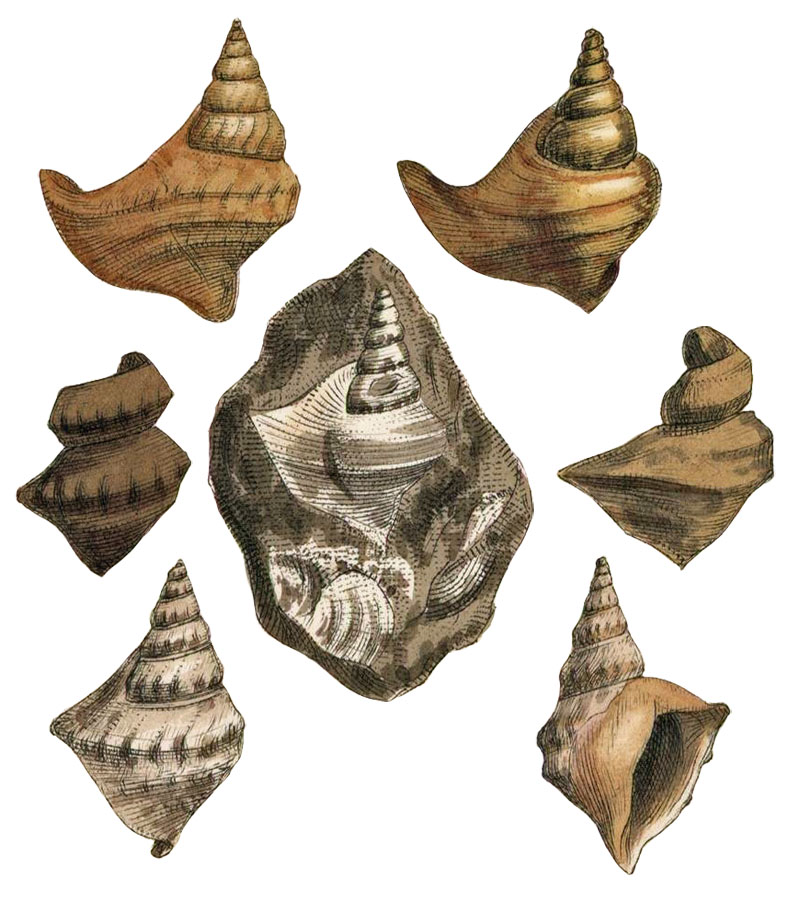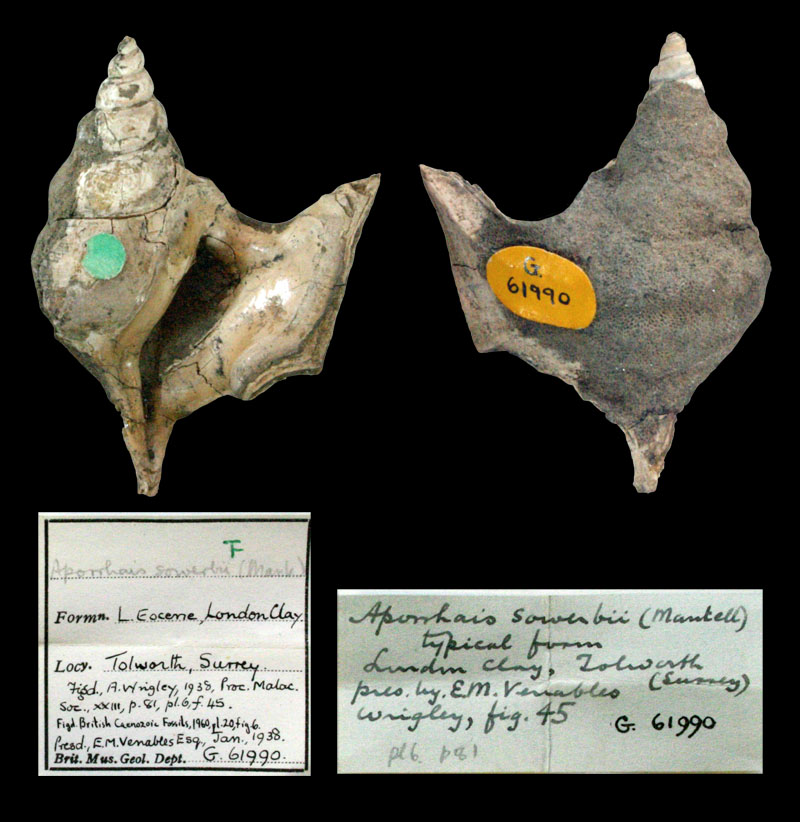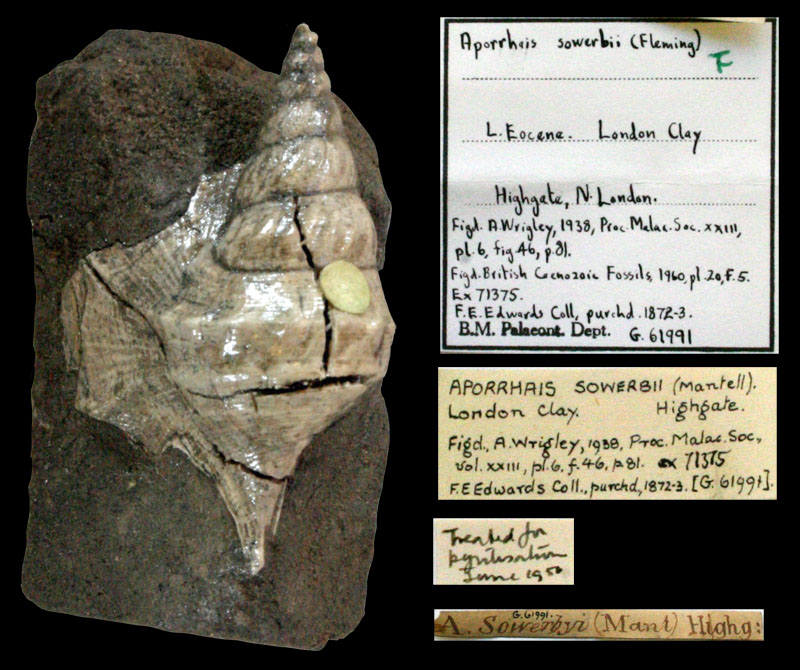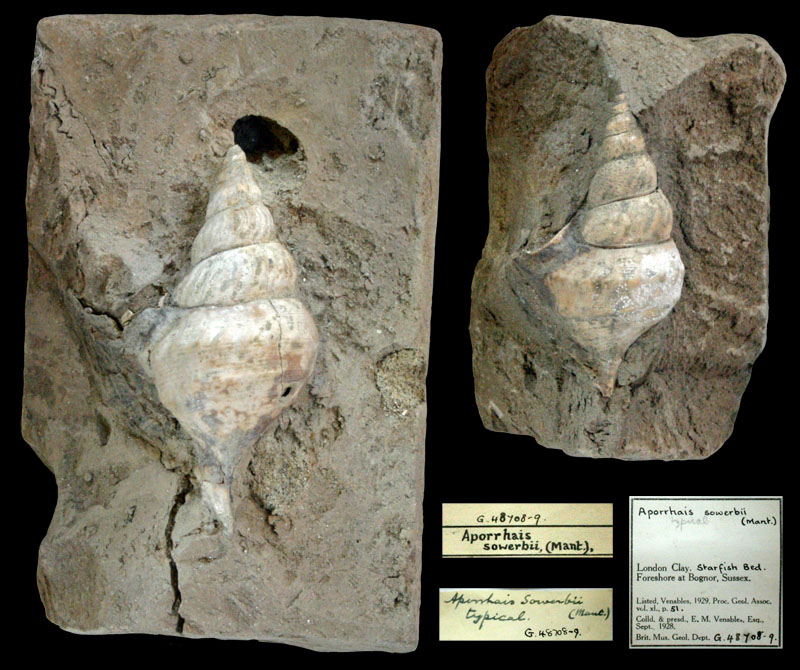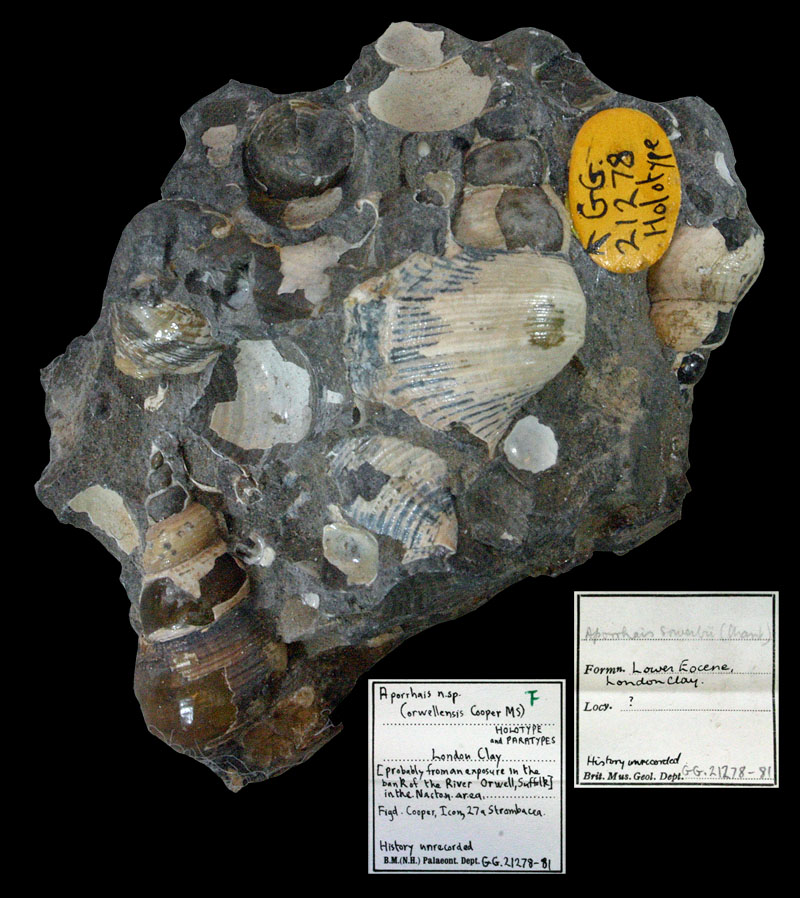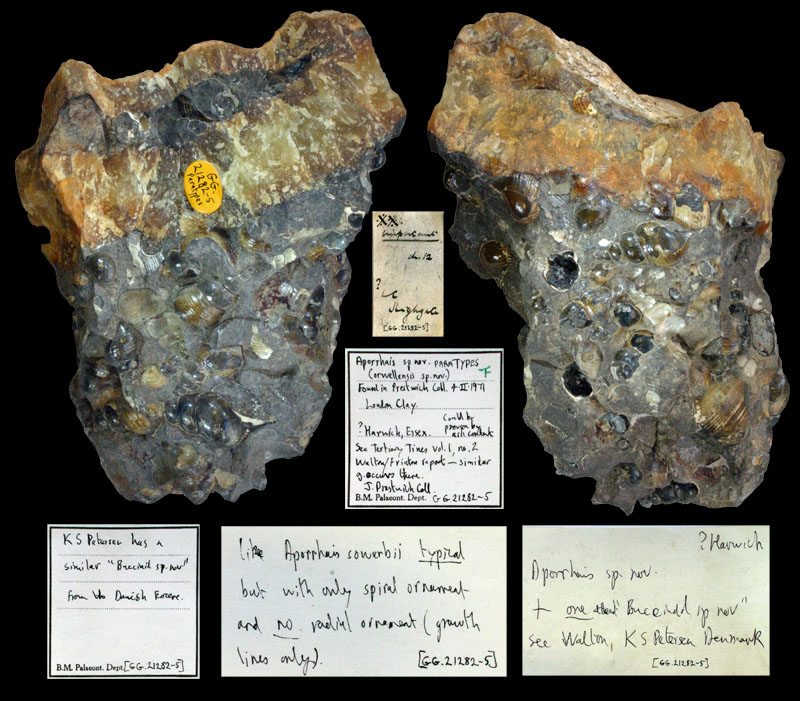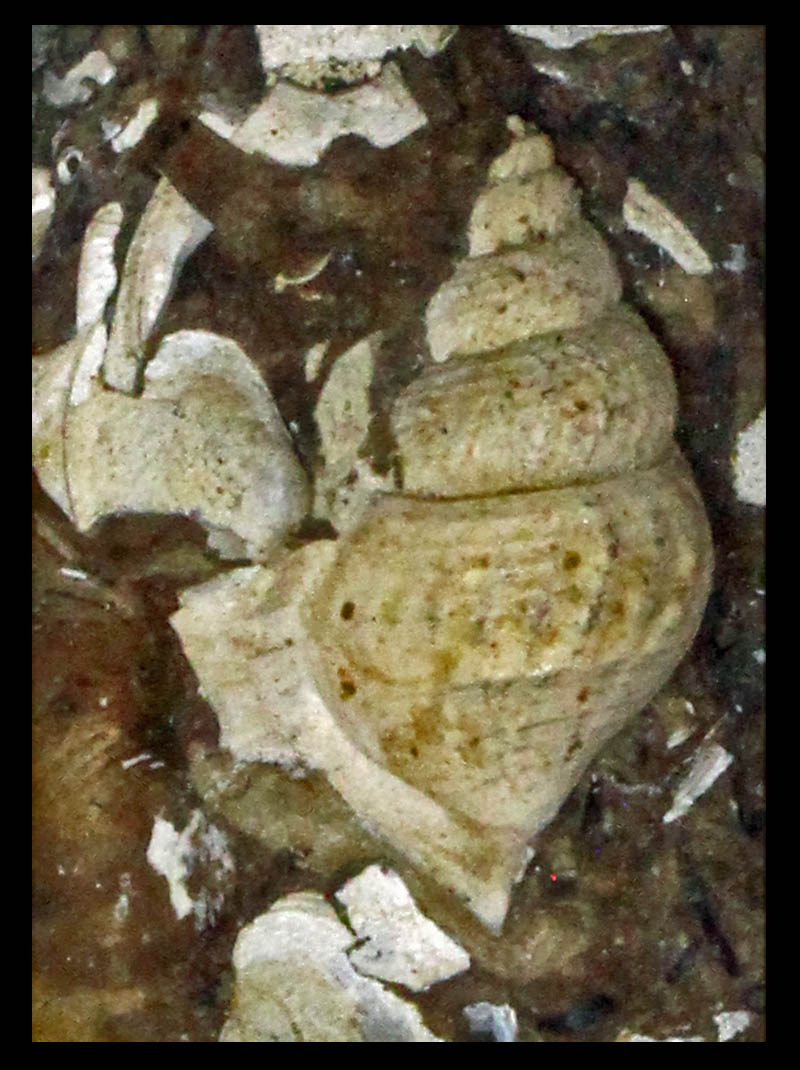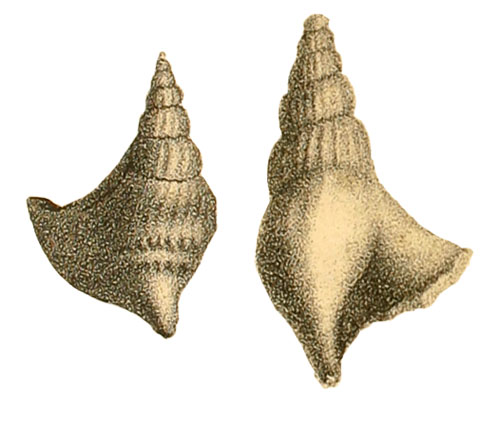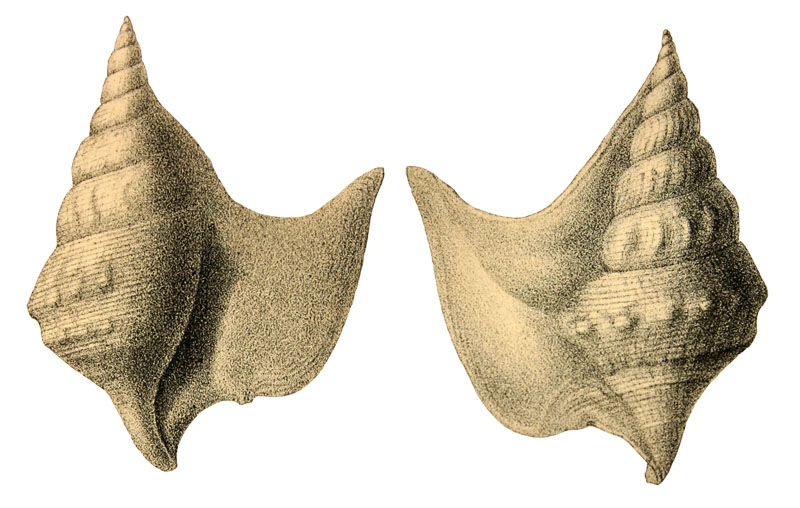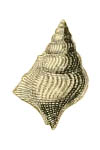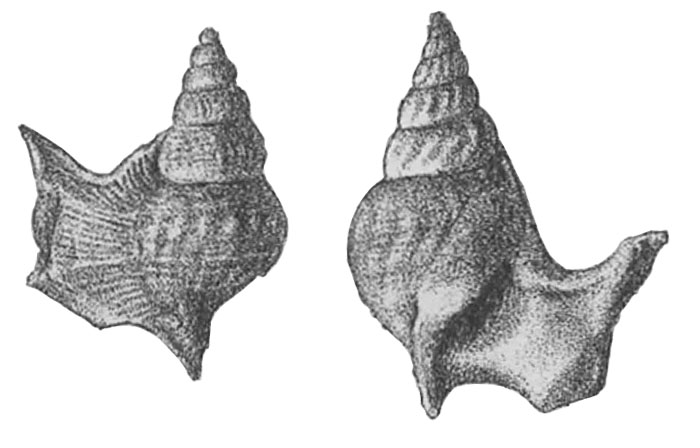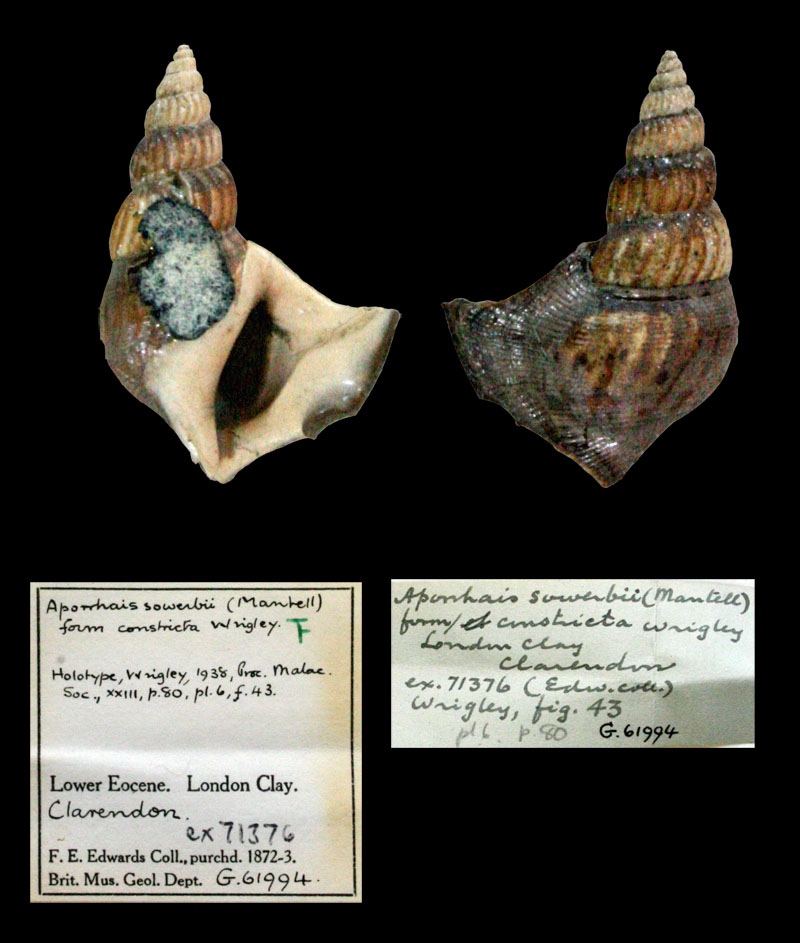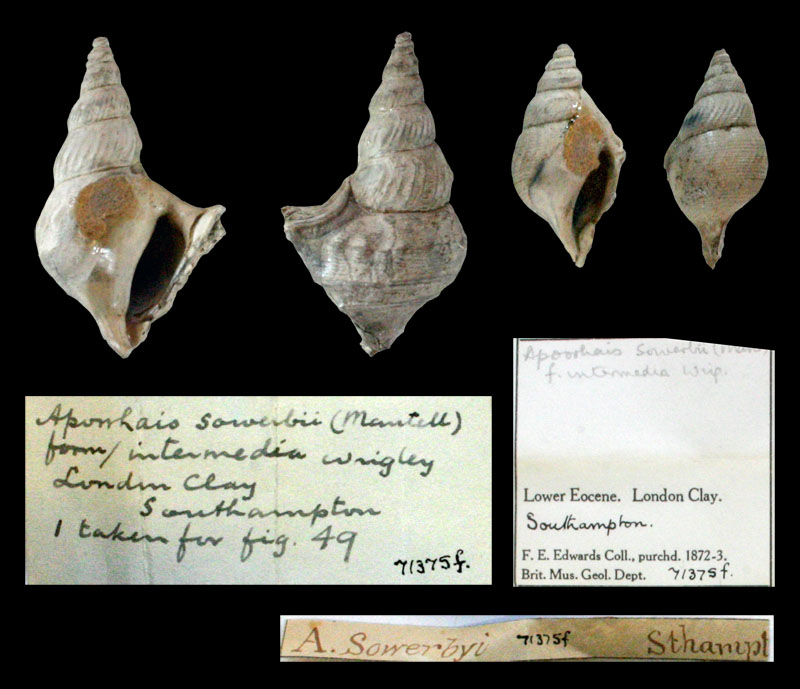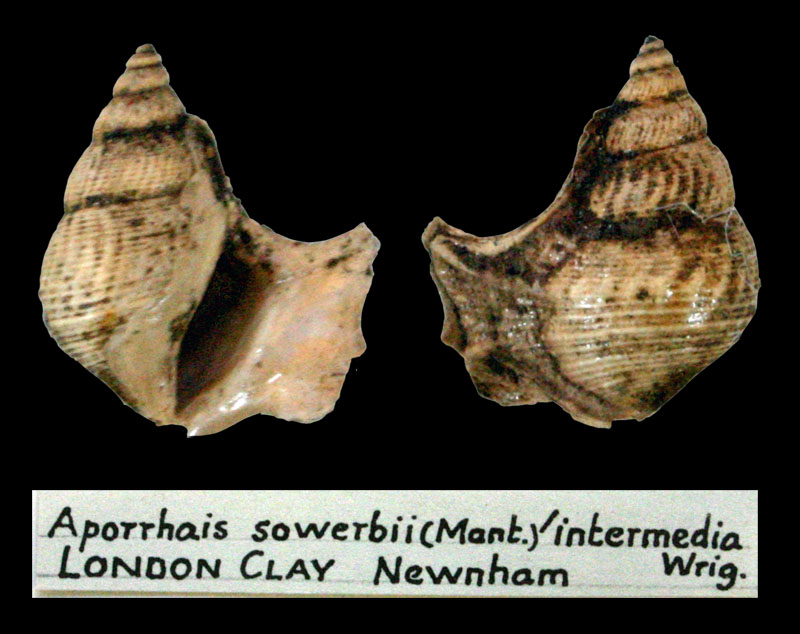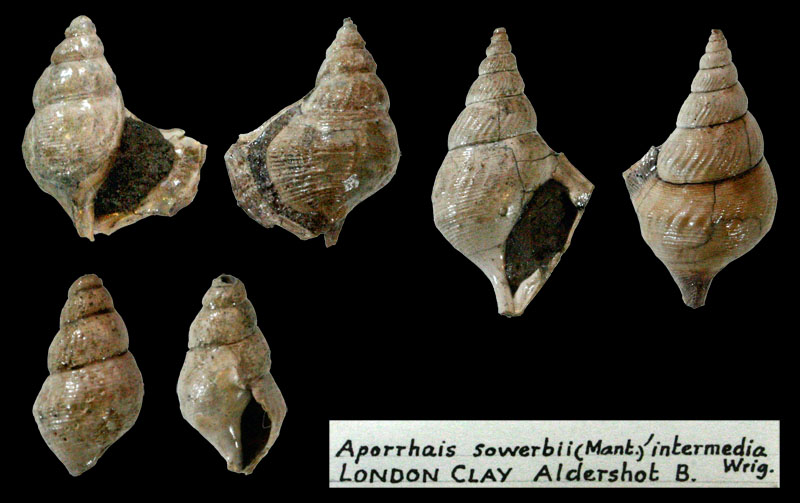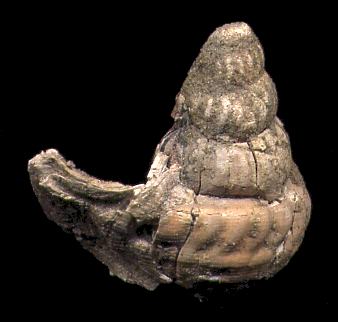|
edit SideBar
|
Species / Aporrhais Sowerbii
Stromboidea
Original Description of Rostellaria sowerbii by Fleming, 1828, p. 360:
- "5. R. Sowerbii.—Turrited, costated, transversely striated ; last whorl tricarinated; aperture expanded, with a one-angled entire lip ; superior canal short.—R. Parkinsonii, Sower. Min. Conch, t. cccxlix. f. 1, 5."
Stratum typicum: London Clay, Ypresian, lower Eocene
Rostellaria parkinsonii in Sowerby, 1822 , pl. 349, fig. 1-5
Specimens from institutional collections
Aporrhais sowerbii (Fleming, 1828); London Clay, Ypresian, lower Eocene; Tolworth, southwest London City, Greater London County, London Region, England; Coll. BM(NH) no. G.61990; Copyright BM(NH)
Aporrhais sowerbii (Fleming, 1828); London Clay, Ypresian, lower Eocene; Highgate, North London City, Greater London County, London Region, England; Coll. BM(NH) no. G.61991; Copyright BM(NH)
Aporrhais sowerbii (Fleming, 1828); Starfish Bed, London Clay, Ypresian, lower Eocene; Foreshore at Bognor Regis, West Sussex County, South England Region, England; Coll. BM(NH) no. G.48708-9; Copyright BM(NH)
Aporrhais cf. sowerbii (Fleming, 1828); London Clay, Ypresian, lower Eocene; Bank of the River Orwell, Suffolk County, East Region, England; Coll. BM(NH) no. GG.21278-81; Copyright BM(NH)
Aporrhais cf. sowerbii (Fleming, 1828); London Clay, Ypresian, lower Eocene; England; Coll. BM(NH) no. GG.21282-5; Copyright BM(NH)
Aporrhais sowerbyi, Eocene; Shalkar (Chalkar) Lake, Kazakhstan, Coll. Sedgwick Museum of Earth Sciences, University of Cambridge C11747
- ©2022. Sedgwick Museum of Earth Sciences, University of Cambridge. Reproduced with permission. This work is licensed under a Creative Commons Attribution-NonCommercial-ShareAlike 3.0 Unported License
- Lukovitch, M.T. 1921, p. 159:
- "The account of the fauna from the Tertiary Beds of the Aral Sea given in the following pages, is based on the collection of Mr. W. Batesen. In 1886 he visited the whole northern shore between the Perovski Gulf, the mouth of the Syr-Daria, and lake Chalkar, for the purpose of making scientific investigations. On this journey he collected a large number of well preserved fossils from several localities of this area, viz.: Togus-Ken, Turanghul, Termenbes, Perovski Gulf, Kum-Bar-Sai. Togus-Ken is about ten miles north of the shore of the Paskevich Gulf, and about 29 miles W. of Turanghul.*) Kum-Bar-Sai is a valley on the north-west shore of Lake Chalkar. Tol-Sai is about 50 miles N. E. of the town of Irghiz, in the direction of Chalkar. The greater part of the collection was presented by Mr. Bateson to the Sedgwick Museum, Cambridge, and the rest to the British Museum (Natural History Department)."
History and Synonymy
1832
Sedgwick & Murchison, 1832 defined Rostellaria sowerbii on p. 203 as "R. Parkinsoni, Min. Con. Tab. 349. f. 1.3.4."
Comment Sedgwick & Murchison, 1832, p. 203:
- "This Rostellaria was figured and described by the late Mr. Sowerby as R. Parkinsoni of the Geol. of Sussex; it is however perfectly distinct, and it becomes necessary to adopt a different specific name; that of Sowerbii is here given as a tribut of respect to the present scientific editor of the Mineral Conchology of Great Britain. The R. Sowerbii occurs in the tertiary formations only; R. Parkinsoni in the chalk marl, and Shanklin sand."
1837
Rostellaria in Bronn, 1837, pl. XXXIII, fig. 18
1845
Rostellaria sowerbyi in Nyst, 1845, pl. XV, fig. 4 a, b
- Boom, Baesele, Schelle, Rupelmonde, Kleyn-Spauwen, Belgium
- Comment Wieneke: Described from Lower Oligocene deposits. Should be placed into Aporrhais margerini
- pl. XV is in the book edition pl. XLIV
1847
Comment Chenopus Sowerbyi Philippi, 1847, p. 75:
- "157. Chenopus Sowerbyi (Rostellaria) Sow. jun. system. index. - Rostellaria Parkinsoni Sow. Min. Conch. Tab. 349. fig. 1-5, non Mantell. Ein Exemplar befand sich in der Sackschen Sammlung; mehrere andere sind in der letzten Zeit bei Görzig gefunden worden."
- p.42: "Die Fundorte von Tertiärversteinerungen in der Magdeburger Gegend sind die Umgebungen der Dörfer Westeregeln, Süldorf, Osterweddingen, Altenweddingen, Wellsleben und Görzig."
1850
Aporrhais Sowerbyi Dixon, 1850, pl. XIV, fig. 21
1884
Aporrhais sowerbii in Gardner, 1884, pl. XVII, fig. 5, 6
- from Clarendon, London Clay, Edwards' collection in the BMNH
1885
Text about Aporrhais aff. Sowerbyi Mant. ? of von Koenen, 1885, p. 58:
- "Ein Bruchstück, die letzten 3 mässig gewölbten Mittelwindungen und einen kleinen Theil der Schlusswindung enthaltend, trägt auf denselben zuerst 16 flache, gedrängte Spiralen, zwischen die sich dann feinere einschieben, und hat 9 Mm. Dicke und 13 Mm. Länge; ca 3 Mm. des Gewindes mögen fehlen. Zuerst sind nur gekrümmte Anwachsstreifen sichtbar, welche später in der Mitte der Windungen faltenartig hervortreten, auf der letzten Mittelwindung sich ein wenig unter deren Mitte immer mehr erheben, auf deren letztem Viertel sogar zu 4 schräg stehenden Knoten, in deren Fortsetzung dicht über der Naht Anschwellungen auftreten. Auf der Schulsswindung ist die Längsskulptur da, wo die Innenlippe sich auflegen würde, plötzlich wieder fast ganz verschwunden. Die Innenlippe hat sich auf der letzten Mittelwindung in die Höhe gezogen, ist aber grösstentheils abgebrochen. Das Stück gehört jedenfalls in die Verwandschaft der A. speciosa Schloth. (= A. Margerini de Kon.), und kommen ganz ähnliche Formen in Ober- und Unter-Oligocän vor, wie ja auch Gardner (Geol. Mag. 1884. S. 532 Taf. 17 Fig. 7 u. 8) mit A. Margerini de Kon. eine Form von Herne-bay identificirt. Die von Deshayes beschriebenen Formen aus dem französischen Unter-Eocän und Paleocän (Chenopus dispar Desh., von Vincent auch von Wanzin etc. angeführt), weichen theils durch grobe, gerade Rippen, theils durch das Fehlen von Knoten weiter ab; näher kommt wieder die A. Sowerbyi Mant. aus dem London-clay, welche auf den Mittelwindungen gekrümmte Rippen und wenigstens auf der Schlusswindung auch mehr oder minder starke Knoten besitzt. Ausserdem liegen noch Fragmente einer kleinen Form vor, einen Theil des Flügels und die Gewindespitze enthaltend. Der Flügel erinnert in mancher Beziehung an den von A. Sowerbyi und an Beyrich's Abbildung (Zeitschr. d. Deutsch. geol. Ges. VI Taf. 14 Fig. 2), stammt aber von Exemplaren, die höchstens den vierten Theil so gross waren, wie jenes. Ein Bruchstück der Gewindespitze enthält 2 1/4 mässig gewölbte Mittelwindungen und das niedrig-kegelförmige Embryonalende von 3 glatten, gewölbten Windungen. Auf der ersten Mittelwindung stellen sich ca. 10 feine, ziemlich gedrängte Spiralen ein, zwischen die sich 1 1/2 bis 2 Windungen später noch feinere einschieben. Auf der ersten Mittelwindung erscheinen auch feine, gekrümmte, nach unten etwas vorgebogene Längsrippchen, nahezu 30 pro Windung. Dieselben werden aber auf der letzten halben vorhandenen Windung etwas stärker, weniger zahlreich und stärker nach unten vorgebogen. Auch diese Bruchstücke dürften einer Art aus der Gruppe der A. occidentalis angehören."
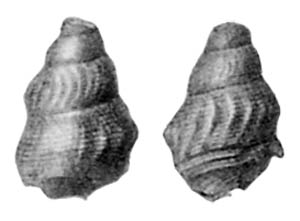 Aporrhais aff. Sowerbyi in von Koenen, 1885, pl. III, fig. 13 a, b
1938
- Aporrhais sowerbii constricta Wrigley, 1938
Aporrhais sowerbii constricta Wrigley, 1938; Holotype; London Clay, Ypresian, lower Eocene; Clarendon near Salisbury, Wiltshire County, South West Region, England; Coll. BM(NH) no. G.61994; Copyright BM(NH)
- Aporrhais sowerbii intermedia Wrigley, 1938
1951
- Aporrhais sowerbi korobkovi Muromcev, 1951
1997
Jeffrey & Tracey, 1997
- p. 93: *"Five out of a suite of 30 specimens of Aporrhais from Swanwick proved to belong to A. sowerbii constrictus, which differs from the typical form of A. sowerbii by its more attenuated and turreted spire and stronger ornament, and is here elevated to subspecies rank. Range: division B2 (uncommon). Palaeoecology: detritivore."
- p. 77: "Division B2: Only the upper part of this division was seen in situ. Molluscs were mostly too scattered in occurrence for bulk-sampling to yield worthwhile results, although a sample from a turritellid-rich horizon near the middle of the sequence formerly exposed in the 1957 pit, yielded a number of records of minute taxa not found elsewhere. Bivalves were generally uncommon, although the suspensionfeeding bivalve Arctica was locally abundant. The deposit-feeder Nucula and the suspension-feeder Venericor were the least uncommon of the more widely distributed bivalves. In contrast a number of gastropod species were moderately abundant: the ciliaryfeeding and detritivorous turritellid Haustator circumdatus and the detritivore Tibia were most numerous, with H. circumdatus occurring in drifts in one horizon. Turritellids collected from these drifts were frequently encrusted by small oysters, serpulid worms and bryozoans, suggesting a brief slowing or pause in sedimentation in this part of division B2. The predatory generalists or scavengers Cantharus and Pseudoneptunea, the molluscivore Euspira, and the vermivore Eopleurotoma also occurred frequently. The composition of the mollusc fauna is consistent with a shallow shelf marine environment having some deltaic input, as indicated by Wright's (1972) study of the Foraminifera. The scarcity of cemented epifaunal bivalves at this level suggests a generally high rate of sediment input. The top few metres of this division become increasingly sandy, with occasional pockets of current-winnowed shells, indicating the onset of the shallow subtidal conditions characteristic of the Barnea bed. This division has the greatest faunal diversity, with 89 species of mollusc, of which 21 (24%) are bivalves and 65 (73%) are gastropods. Of these, the most diverse types are infaunal suspension-feeding bivalves with 8 species (9%), and vermivorous gastropods with 18 species (20%). The diverse assemblage of vermivorous gastropods, especially turrids, present in this unit suggests that a comparably diverse fauna of worms was originally present. Similarly, the presence of gastropods which were carnivorous browsers on colonial organisms and predators of echinoderms indicate the former presence of soft-bodied or poorly-skeletonized organisms otherwise unknown in the fossil record at Swanwick."
Specimens from institutional collections
Aporrhais sowerbii intermedia Wrigley, 1938; Southampton, Hampshire County, South East Region, England; Coll. BM(NH) no. 71375 f.; Copyright BM(NH)
Aporrhais sowerbii intermedia Wrigley, 1938; Newnham, Gloucestershire County, South West Region, England; Coll. BM(NH); Copyright BM(NH)
Aporrhais sowerbii intermedia Wrigley, 1938; Aldershot, Hampshire County, South East Region, England; Coll. BM(NH); Copyright BM(NH)
Specimens from private collections
Aporrhais sowerbii constrictus Wrigley, 1938; London Clay, Ypresian, lower Eocene; Isle of Wight, Isle of Wight County, South East Region, England; 19 mm; Photo & Copyright Alan Morton
References
- Curry, D. & King, C. 1965. The Eocene Succession at Lower Swanwick Brickyard, Hampshire. Proceedings of the Geologists' Association, 76(1): 29-35.
- F. Dixon, 1850. The geology and fossils of the Tertiary and Cretaceous formations of Sussex; i-xvi, 1-423, i-xvi, 40 pls. London, Fulltext
- Fleming J. (1828). A history of British animals, exhibiting the descriptive characters and systematical arrangement of genera and species of quadrupeds, birds, reptiles, fishes, mollusca, and Radiata of the United Kingdom. Edinburgh pp. XXIII + 565
- P. Jeffery & S. Tracey. 1997. The Early Eocene London Clay Formation mollusc fauna of the former Bursledon Brickworks, Lower Swanwick, Hampshire. Tertiary Research 17(3-4):75-137
- Nyst, 1845
- Philippi 1846/1847
- Koenen, A. von (1885): Ueber eine Paleocäne Fauna von Kopenhagen. - Abhandlungen der Königlichen Gesellschaft der Wissenschaften zu Göttingen, 32: 1-128, Taf. 1-5; Göttingen.
- Lukovitch, M.T. 1921. A new contribution to the knowledge of the Lower Tertiary Mollusca of the Aral Sea, Société des sciences naturelles croate 33: 157-174, URL: https://www.biodiversitylibrary.org/page/11244640
- S. Tracey, 1992. A review of the Early Eocene molluscs of Bognor Regis (Hampshire Basin), England; Tertiary Research 13(2-3), 155-175, Fulltext
- Wrigley, 1938
|

